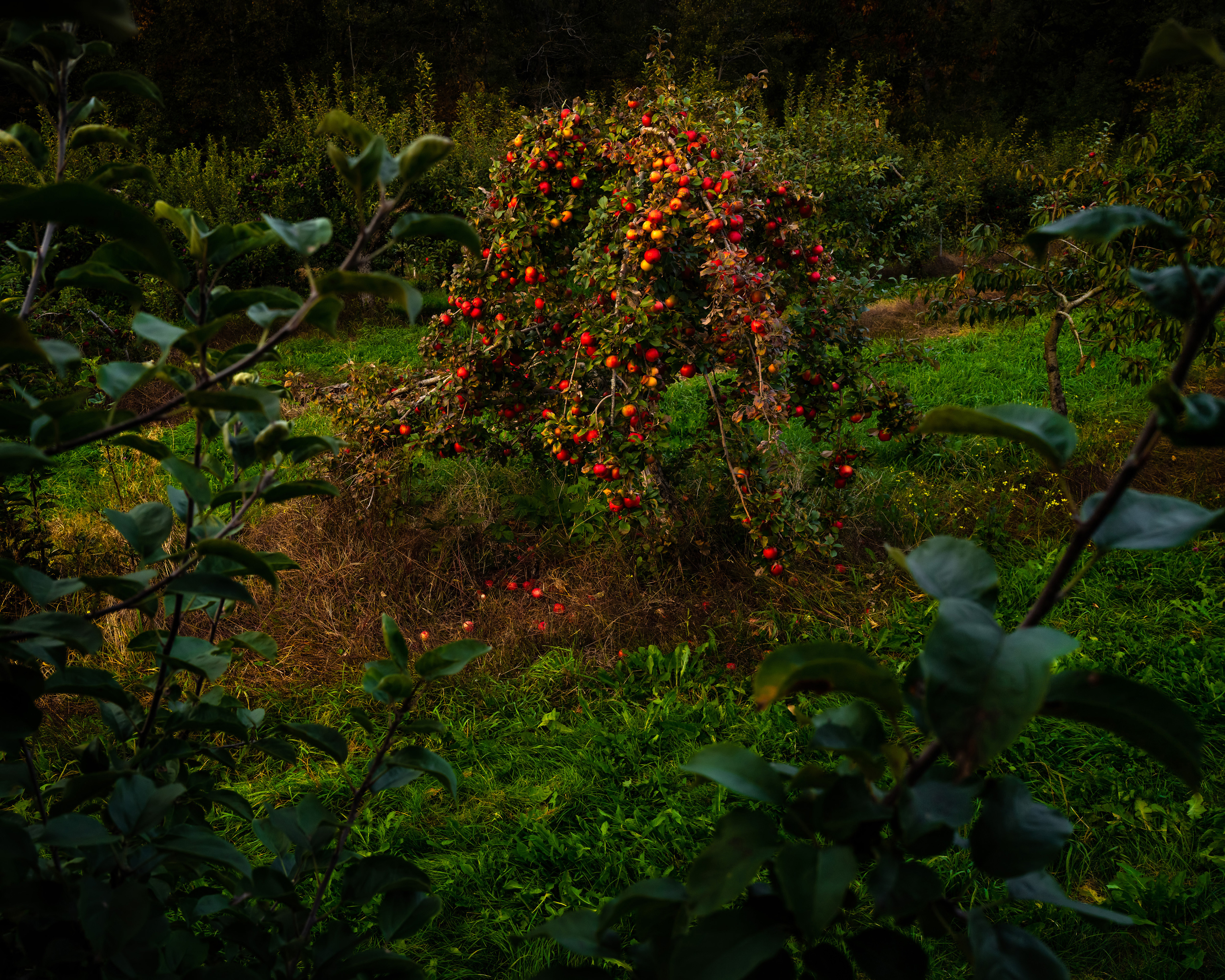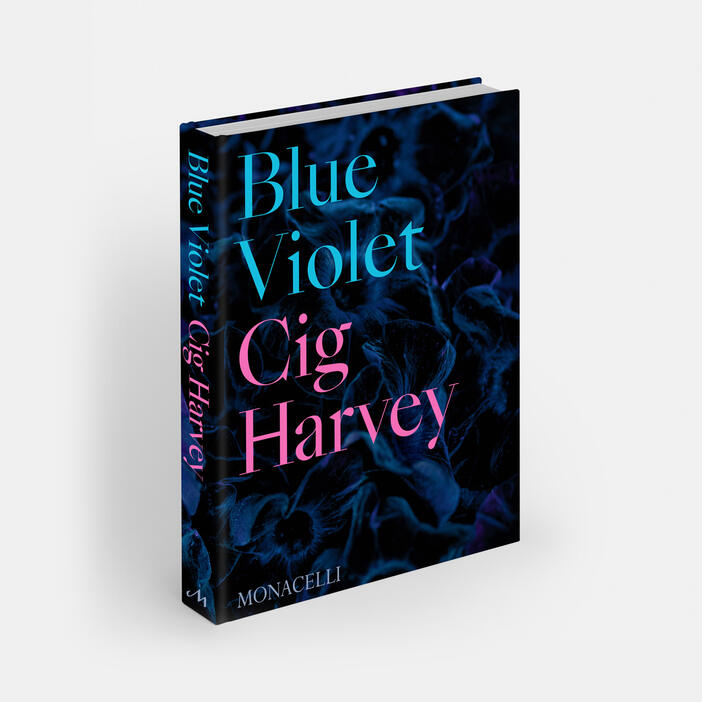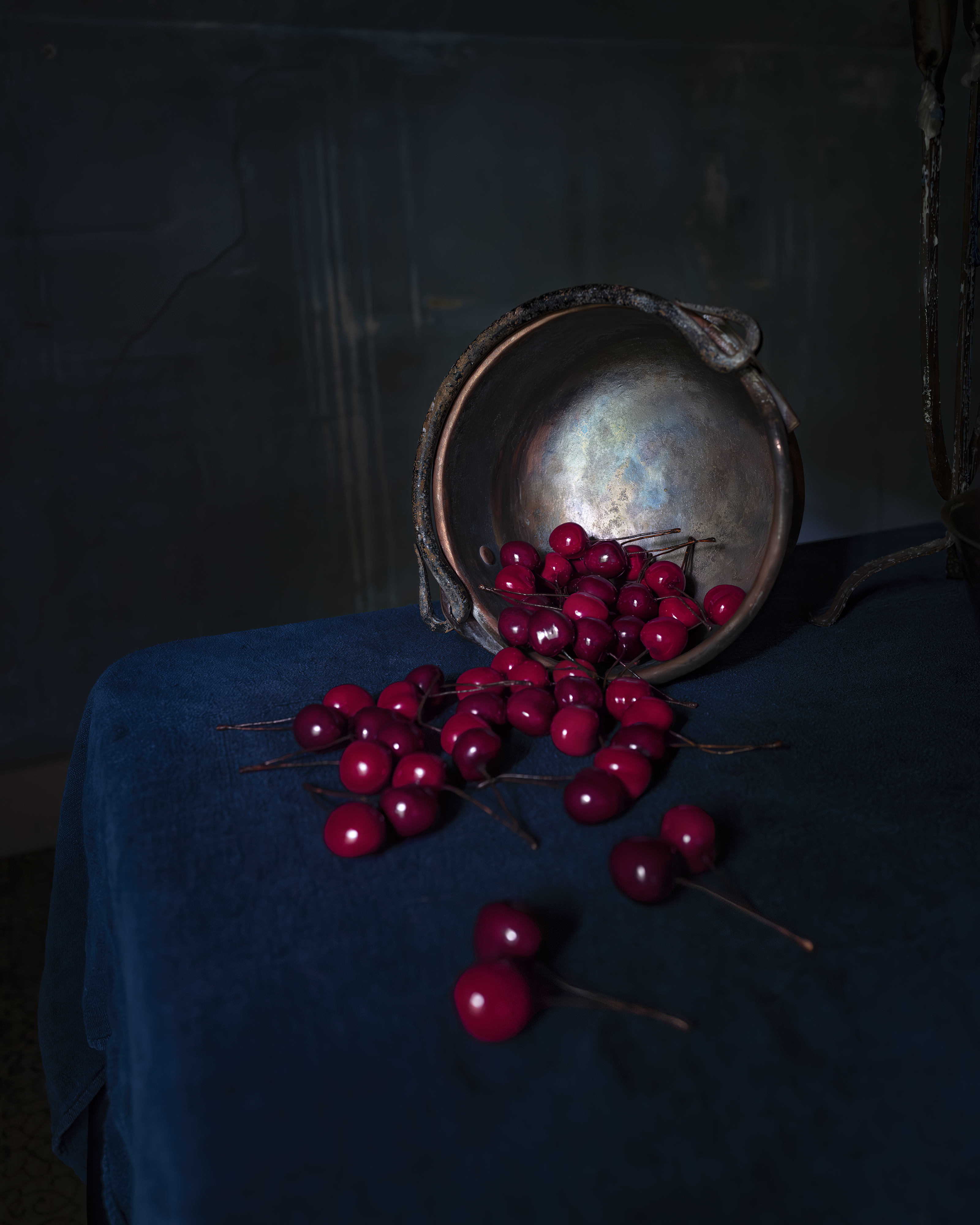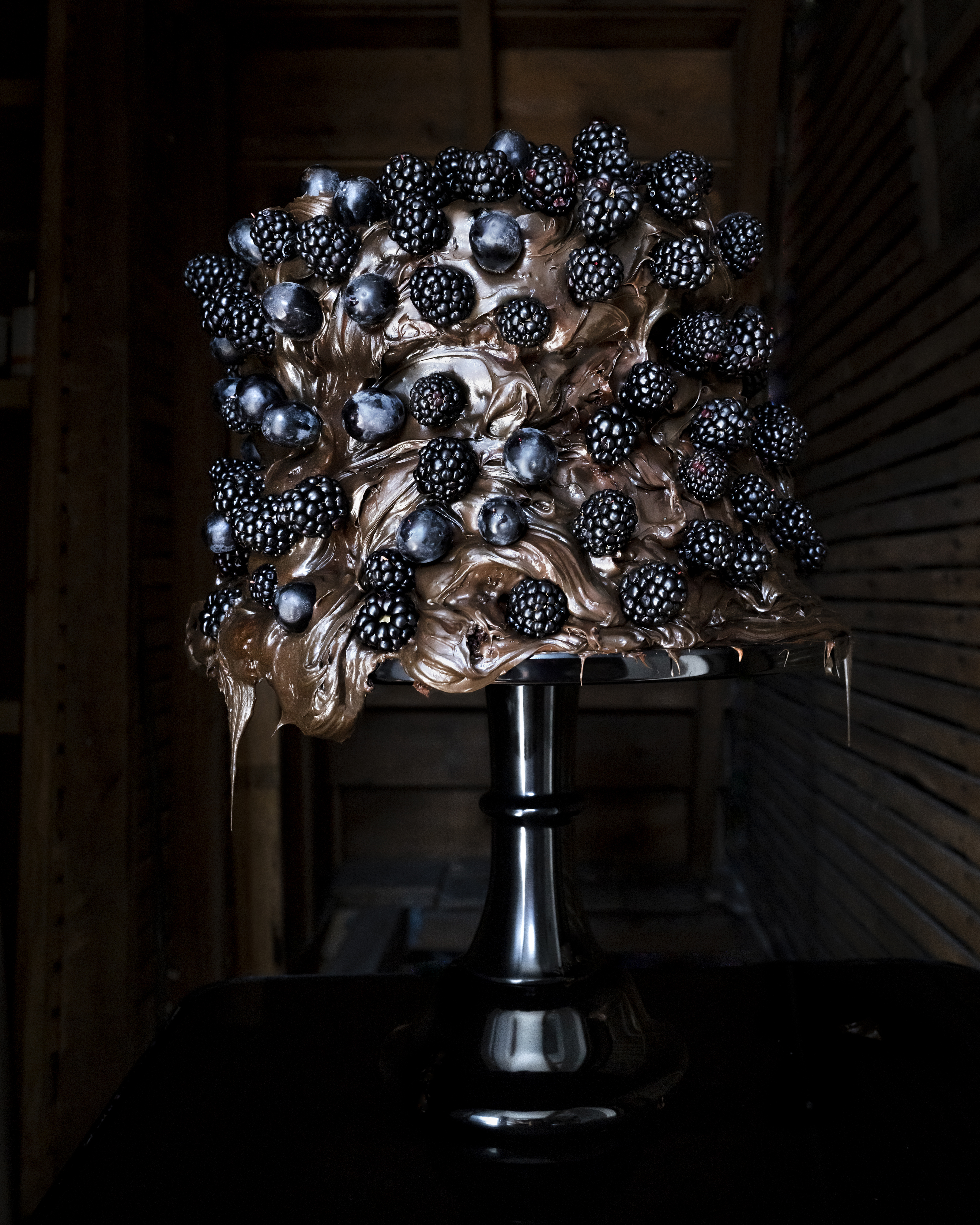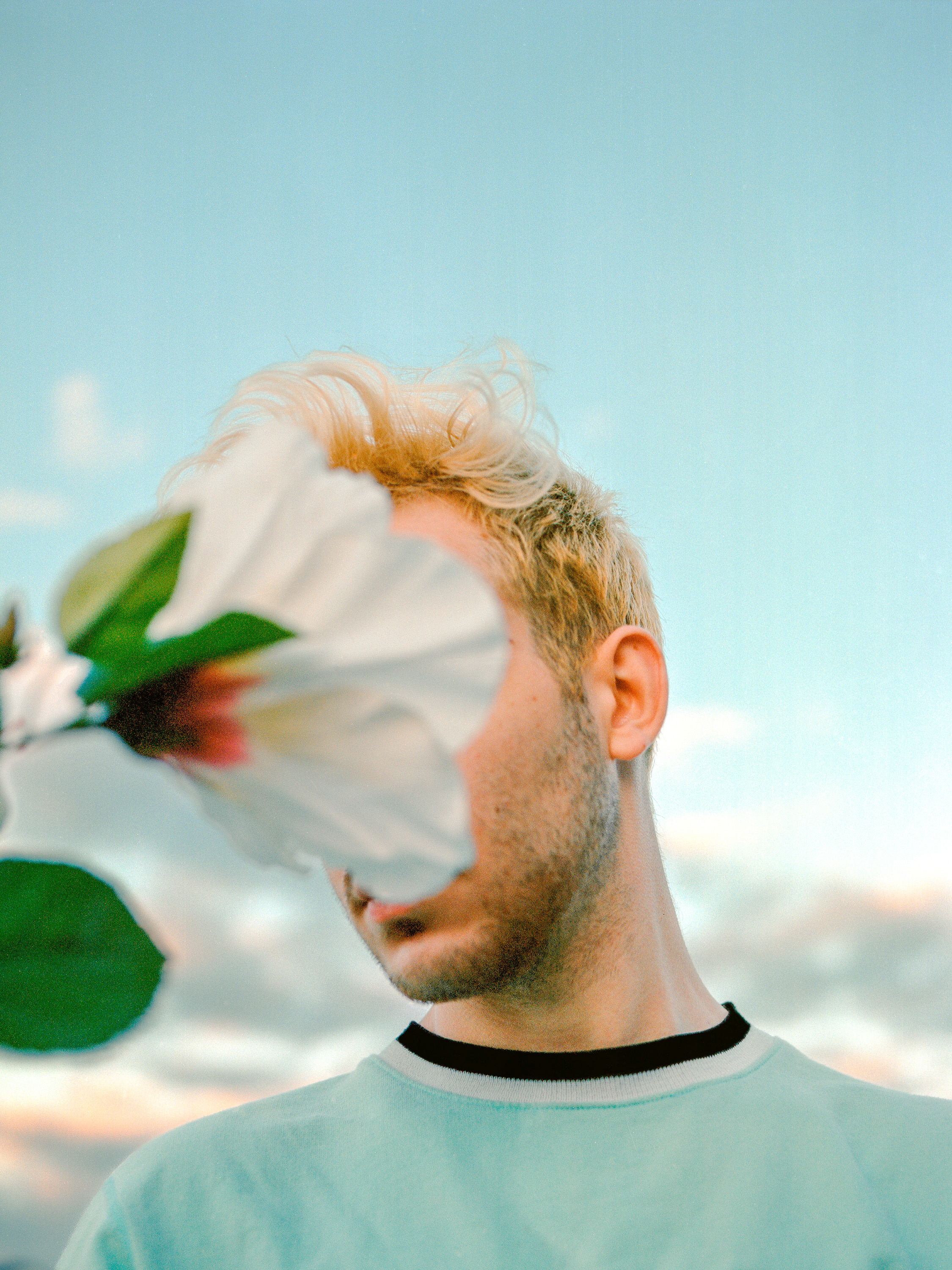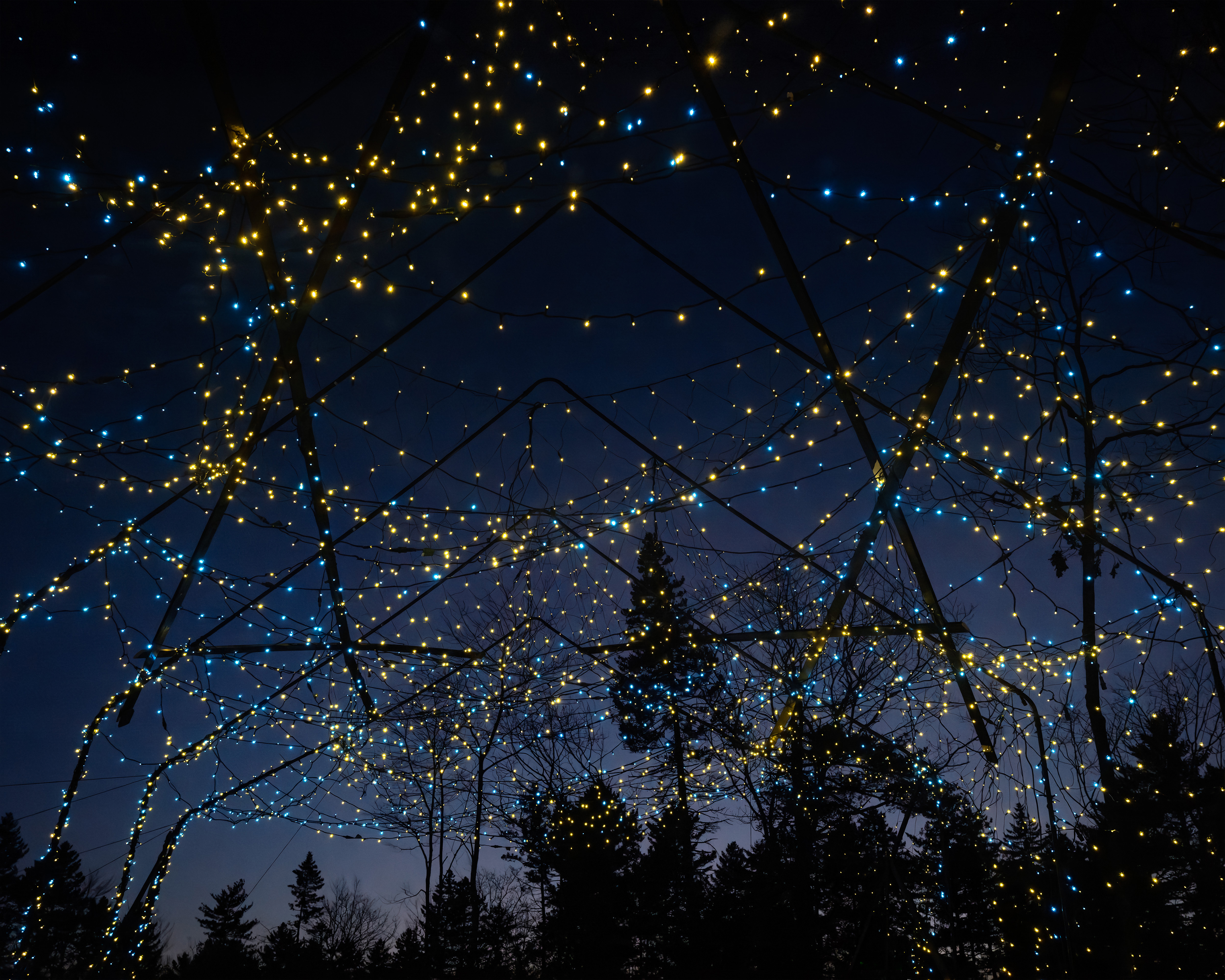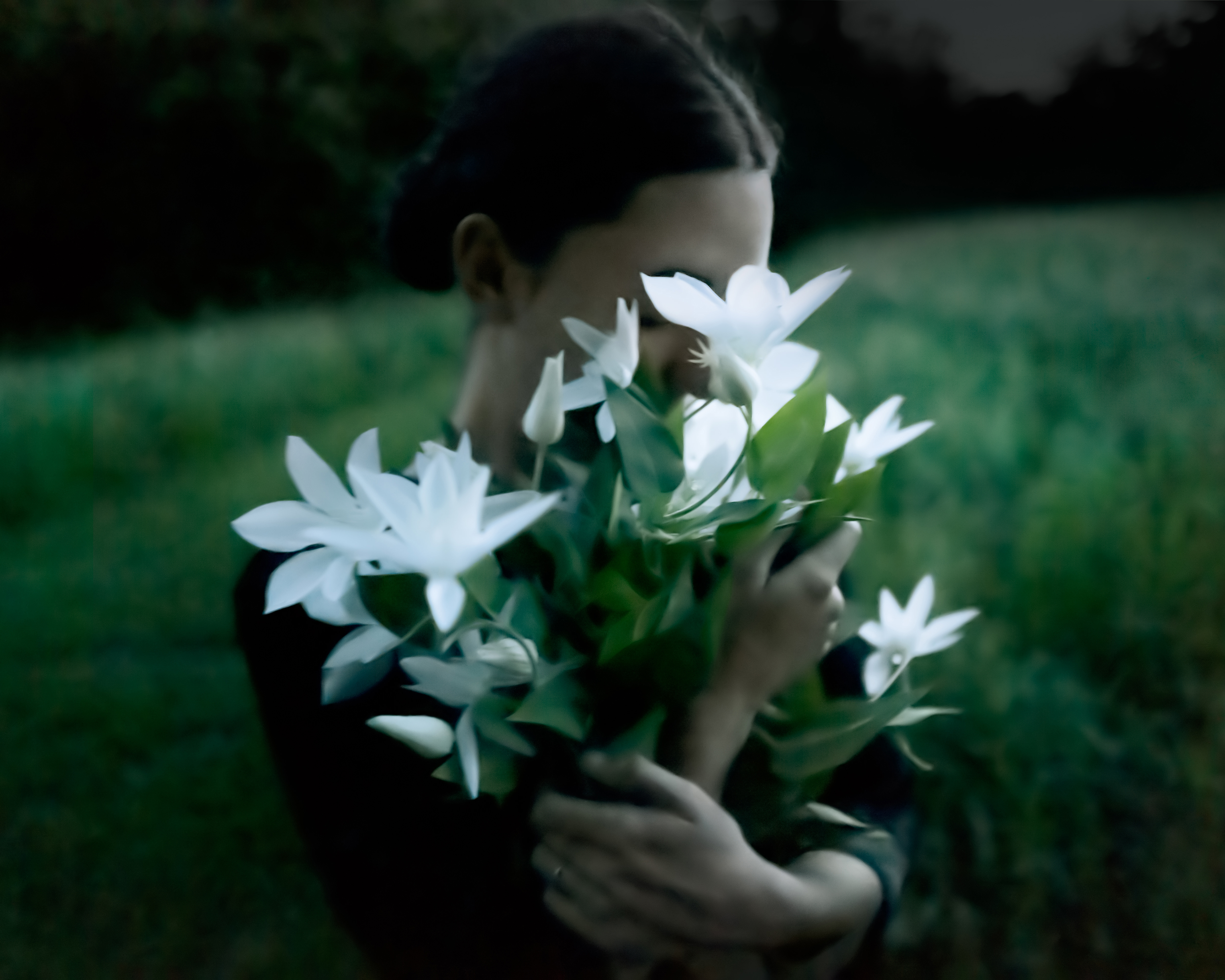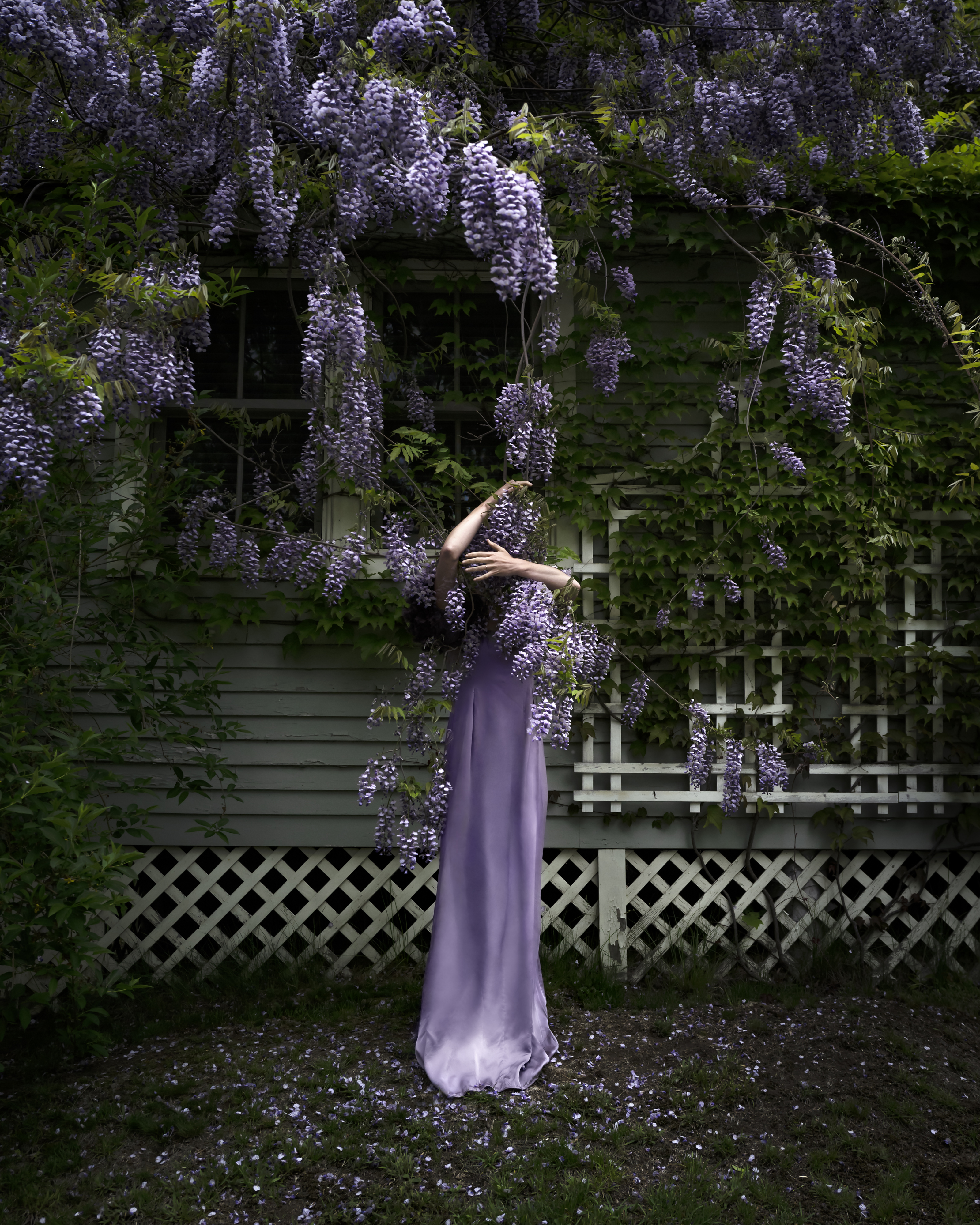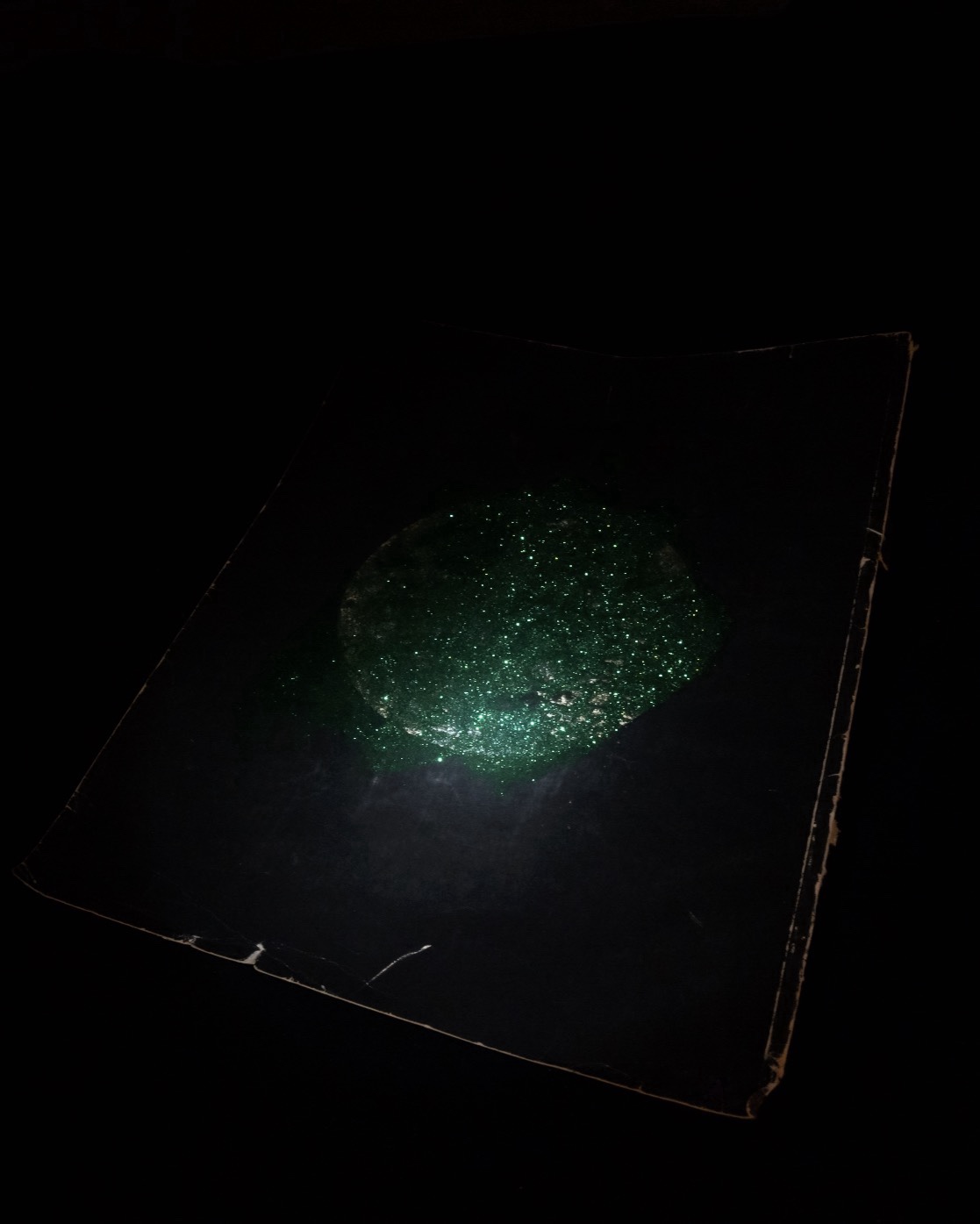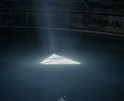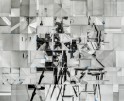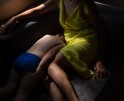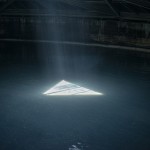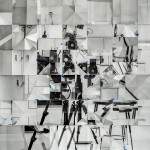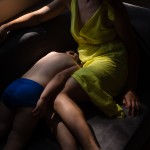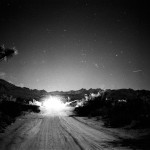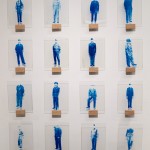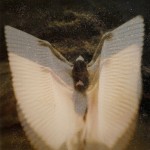In Conversation with Cig Harvey: Beauty, Books, and Installation
I was first introduced to the work of Cig Harvey in late 2020, at a time when I was just beginning to explore the natural world, color, and the symbolism of flowers in my work. Her work instantly resonated with me, and I spent hours listening to her speak in interviews and studying her work. She was an incredibly formative artist in my development and helped guide me through discovering my interests in photography. Fast forward several years, and I’ve not only had the opportunity to meet her, but also to call her a friend, and someone I look up to as a mentor.
When I approached Cig about doing an interview/having a conversation, I was met with excitement and an invitation to her home to chat over some tea. I’m incredibly thankful for our relationship and the following conversation.
I know that sequencing is a big part of your process and something you really value having control over. How does your thought process vary when considering the book format vs. an installation?
When I’m planning an installation or a show, for instance, my last show Feast, I’m thinking about what happens when you turn a corner, or what happens when you take in “this piece” or the one in the background. It’s linked to how a book is sequenced, but different since it’s larger and your body moves through the spaces.
I think that for books, and typically for how my books are, there is a visual sequence first and foremost. Which is based on form, and the brain liking surprise and going through a journey. There are connections with color and all sorts of visual elements, but there’s also a layer of narrative. For example, Gardening at Night was sequenced visually, but it also had a chronological sequence in terms of Scout’s age. The sequence followed the seasons too, it started in winter and then went through spring, summer, and fall. There were many different layers to it, and it was also text and image together.
So it’s like this puzzle, that as you know only has one piece, which I think can be different if you’re working with images that aren’t as narrative. In that case, it really can be this beautiful visual form. I have a few books that are just color, so there is no narrative and you can sort of come at it in any way.
That’s the first and foremost important thing for sequencing. Both with installation and books, but it’s that layering of a narrative that adds another layer of complication. I think the more complicated and layers there are, often the stronger the book. Some people may go through it only looking at one of the layers, and that’s fine, but you want the reward the careful reader. To have two, three, four, or even five different layers happening simultaneously… it’s like a symphony.
Also, thinking about the photo book, I feel like I understand your love for it simply because of its physicality and how it engages with the senses, which is a really big part of your work.
Is the physicality part of your consideration when making a book, as well as in installation? For instance, with Feast, where there was the sculptural element that draws on the senses in a way unique to most photo exhibitions.
Yeah, I mean that really is my thesis and the biggest thing I’m after. To pull you in and make you feel more… the “shake on the shoulders”… to feel this, look at this… So really whatever I can do to make that happen is what I’m after.
So to access all the senses, [in Feast] that’s why there was audio. There was that experiential moment of turning the corner and seeing things lit up and activated by light, whereas a book is a different experience. They’re equally great, but there’s something about a photo book, where you’re sitting down and entering into “that world”, and you just come out a little different, don’t you? I just love it.
It’s such an inward experience, and I actually feel more and more with the shows and the installations, it’s inward but also very much outward and public. Where there’s this interiority when it’s between the maker and the reader/viewer of a photo book that’s just wonderful. There’s a level of intimacy there that’s not present in the larger exhibition.
Do you translate your learnings between your experience creating installations and books? As in, is there a dialogue between the two forms and a shared process of evolution and ideas?
Definitely! Like with Blue Violet, which is a French fold, so many people wrote me either loving it or being perplexed.
“Oh I love this book, but the pages weren’t cut.” or “Are you supposed to press flowers in between?”
So the way people experienced it opened up a whole new way of analyzing it after the fact. Leading me to think, “Oh! Well, maybe I can incorporate that idea next time.” It creates this dialogue going back and forth.
And the same with the show [Feast], I’m not sure if I told you this, but a lot of things went missing from the table. My first reaction was, “Oh dammit I loved that!” because there were cakes, candles, fake food, and real food. Alongside flowers, weird figurines, beautiful old spoons, knives… a lot of different ephemera that surrounded a feast.
However, loads of it, like the fake cherries, went missing. I would visit the table every day or two and change things, it was really interesting that there was this need to take something from the table. It became this sort of exchange… and I would have never planned that! So now, next time for the show I’m going to incorporate that idea in, and in fact, encourage people to somewhat change it.
Some people couldn’t not touch the cake. Like there were fingerprints all over them, they had to find out what was real and what wasn’t, and so, I’m going to take that response moving forward. I really didn’t think people would be eating off the table or touching it, and they really did. That was the biggest joy of the show, how people interacted with it. Then the photographs sort of became, in a way, secondary. Or like, they experienced the photograph, and then they went back and experienced them in a different way having had the more tactical sense of touch with the table.
So then, how can I take that for the next show or the next book? We’re working exactly on this right now with the book coming after Blue Violet, which is going into design right now. How can we take it further without it being over the top? Like without it being a furry cover or something *laughs*
Going off that, can you talk a little bit about the new work?
It’s about sight, light, and color. The way we perceive light, what’s real and isn’t, human nature, biologically what happens in the body when we respond to different colors, and the history of color. So in the same way that in Blue Violet, I looked at how flowers were used historically, geologically, and culturally, like in cuisine, I’m building off that, but it’s also about sight and light.
Do you have a process for developing motifs? Like fruit and flowers for instance, is it on a research basis?
You know… I never set out with that sort of intention. The subject matter isn’t always important, it is but it isn’t, because it’s not a book about flowers or cake, it’s always about human nature, desire, and life. So using whatever I can to talk about that, with motifs or what the pictures are of, sort of grows out of itself, because it becomes this access point to get people to feel more.
People say, “Oh let me come and look at your garden!”
Well, my garden is terrible, I know nothing really about flowers. But I learned about flowers to make the last book, and you know, I’ve never actually baked a cake, Scout bakes the cakes, I’m not a baker. I was just using cakes as a way to get to people. I didn’t realize that everybody has a cake story, so it became a way to connect with people.
I know that making mind maps, and sort of spider-webbing your thoughts and ideas is a part of your practice. Does that play a role in the process?
Typically it would reveal itself in a really intuitive and instinctual way, and then I spend time with the pictures and I think “Oh that keeps popping up!” and then I would mind map or spiral out from there.
Or I’ll start with something that comes out in the middle of writing, and be like “Oh, that word intrigues me, let me think about it more, let me expand on it.” So I write like a thousand words on a piece of paper, and that’s an ongoing, living document. It changes, sometimes I start again, it shifts, I do the opposite, things like that. So yeah, that’s a part of it.
Have you ever done that with your work?
I’ve done it in a smaller capacity, but not a huge mind map before.
I mainly journal… most of the writing that’s a part of my work comes from stream of consciousness thoughts. I usually write and then put it away for some time, only to come back to it months later. At that point, I could look at the text and find ideas that at the time were only living in my subconscious, and yet at this point, have surfaced in an image I made or in my research since. It can also function in the opposite way too, highlighting something I haven’t investigated yet and giving me a sense of direction.
In my practice though, I definitely think music is most important for generating ideas. Spending time with an album or song, and just writing down words or phrases that come to mind, or trying to describe the place it’s putting me in or the mental image it’s constructing, tends to lead to the most inspiration.
Interesting, and who, in your most recent work, have you been listening to?
I approach music in a few different ways. With my most recent book, I was focused on transforming this space I felt confined to shoot in after being mugged, so like… how do I take this parking lot and transform it into a different world?
So, it’s like navigating that space with a song that feels really potent, and letting that calibrate my eye in a sense, or construct the way I’m perceiving things. There’s a Weyes Blood song (Wild Times) that felt really important to me, and is still informing my recent and ongoing work.
I like what you’re saying, do you think you have super auditory skills?
I have pretty bad synesthesia.
I was getting that from you. I am ashamed to say that I am often found in silence… I love music, and I used to love it, but I find that being in silence is where you’ll find me if I’m left to my own devices. I keep trying to change it and I know that one day I’ll go back to music, but I feel like for me, I think that the way I can see color is heightened, and there are people for every sense who have one heightened. I think you have that for sound, and true audiophiles… they go to the Met Opera and they sit at the very very top since that’s right in the cone, and the sound there is incredible, yet you can’t see anything… I just love that! All those audiophiles up there just listening.
One of the other really important albums for my most recent book was Blonde, by Frank Ocean. The cover was taken by Wolfgang Tillmans, and that image was really formative for me. It actually has a resemblance to my self-portrait with the hibiscus over my face, which I didn’t realize for like 2 years *laughs*
I love when you see your influences come together in that way!
I also think that both Blonde and that Weyes Blood album, Titanic Rising, create a really deep sense of atmosphere. Especially, in terms of how they’re mixed and produced. I have a ton of the images from my book sketched out in a notebook, almost identical to what they came out to look like as photos. That just came from sitting and listening to music, and having an image pop into my head and sketching it out to use as a reference.
You know for Dowling and Walsh, and for Feast, there was the audio part with the QR codes, and I feel I learned something there. There were a lot of things going on in that show, maybe too many, but in my home town, I could just throw everything at the wall really, and go crazy being a maximalist.
I’m looking forward to the next time I install it in a space, and thinking about the audio more. Having it be in a different way than a QR code, which was a basic way to begin, but I think really controlling the sound could be special.
Would you ever experiment with audio for a show?
Yeah, I have with sound installation a little, but couldn’t find a way to make it feel organic with the time I had.
Oh, and the third way I use music, aside from calibrating the way I perceive things and generating ideas for images to construct, is for sequencing. Whether it’s an album or a song, I try to map how they navigate their structure and then try to replicate that in my sequence.
I love that! I think it’s really interesting to do that to a specific song. I always said that books are like an album with how you build them. I’ve never actually done it to a specific album, but there are the same general rules around it.
Jumping back to one of my questions, I feel like when I think about you, your work as a photographer, poet, and book artist comes to mind, but I also think of you as a teacher, even if that isn’t your main pursuit right now. Has there been substantial ways that your teaching has changed or influenced your practice?
Absolutely! I think that it’s been hand and hand with my practice. I’m teaching less now, but I’m still very involved in the MFA program (at Maine Media) and continue to have really rich conversations with past students. Like just this morning, I talked to three. I’m not officially their mentor or anything like that, but we just become great friends you know.
Particularly with the MFA program, by the time students have graduated, it’s no longer about filling that role of being their mentor or teacher, it’s just an exchange of ideas between people. So that very notion of talking ideas with people, whether it’s about my work or their work, is absolutely fundamental to me making work. Otherwise, you’re just sitting around in your own head. I have a rich interior life and I’m happy to do that *laughs* but for me, such great joy comes from the exchange of ideas. So, I think it’s absolutely part of who I am as an artist and my identity.
Do you feel the same way?
Yeah, I personally tend to get a little obsessive when making work. Like I get really locked in on ideas and have a hard time not thinking about them. So it really helps to have people to talk to and bounce ideas off of, it kind of quells the thought obsessions. Which are good and bad to have *laughs*
Like on one hand, I can sit down and fully sequence and make a book in a matter of days. Even when I’m not actively working on it, it’s all I’m thinking about. So I feel like I have a really high level of productivity since it’s hard to shut off… but it’s also hard to shut off, which can be tough at times. So the relief of getting ideas out of my head by talking is super important.
I also feel that way, I think most artists have an obsessive trait of some sort, but you can’t stay in it. When I’m really in that making mode, I barely sleep, which isn’t healthy.
Also, for me, when someone says “Who are you making your work for?”
Yes, we all say for ourselves initially, but really for me, it isn’t just for myself, I really want to reach people. So, working with others on their work, it’s really just the first step in reaching them.
Speaking of influences, have you had any new ones that are shaping your work?
You know, I would say literature. It’s such an influence on me, I’m constantly reading, particularly creative non-fiction. So, I think that inspires the work from the last 10 years, more so than something visual.
When I’m not making work, I’m spending my time reading, not necessarily watching movies or listening to music. I’m reading and thinking about how to present something in a different way, visually or through words.
I feel a big part of making new images is finding new ways to subvert expectations. So taking from other mediums is a natural way to approach that.
Exactly! Like what you were saying about music, I think everyone, and this is why I love teaching, whatever you do when you’re not supposed to be doing anything and it’s just yourself… that’s what you have to look at!
For you, it’s probably listening to music, right? Like when you’re not making your work, sequencing a book, or doing something visual that’s related to photography, what are you doing?
Yeah, I think of that and even how you spend your free time in a broader sense. Like if you’re engaging with friends or family, or traveling, they’re all ways to give your subconscious something to chew on, or even train your eye to notice and perceive new things.
Absolutely. I’ve practiced yoga for 25 years, but I’m about to become a teacher. Not because I want to teach, but I just want to learn more, and I feel that the very essence of that, at its core, is the same as what I’m doing in my photography and writing.
It’s like, “Why are we here? What’s the point? How do we live life? How do we die in a way that’s graceful?” and that’s what I’m exploring through yoga!
So, when I’m not making images or writing, I’m either reading, at yoga, with my family, or having a laugh with friends. All these things so play into the main reason why I make my work.
Oh, and in terms of new things I’ve been reading! Well, I love this new book I’ve gotten by Julie Wolfe. It’s not necessarily influencing me but I just wanted to share it with you! The designer who designed Blue Violet, and is working on my new book, just designed this for Julie. Julie takes old books and old paper ephemera, then writes on things and paints on them. It’s all about the experience of color, which is of course right up my street.
But in terms of new books… I loved No One is Talking About This, I just reread a whole bunch of Ann Carson books too. And… I actually haven’t said this out loud before… But what I love about good literature and creative non-fiction is that they take the every day of the world and present it back to you in a slightly rare way, and I think that’s what I’m trying to do with my pictures.
Oh, and Ocean Vuong, one of my favorites! His thoughts on beauty deeply resonate with me.
On the topic of beauty, I feel like it’s such a unifying theme throughout a lot of your work. Whether it’s the vivid and visceral colors, or navigating a surreal world that’s created through the sense of beauty, do you have a larger conceptual attachment to it?
I think there is a mindset surrounding beauty, where it’s “escapism” or “superficial” or “it’s not important” and I have really looked into that, and been like, “Where does that come from? What is that about? And do I feel that?” Just sort of questioning who set those parameters.
I’ve been really researching and looking into beauty, and that’s actually a lot of the writing in the book, and there’s already a lot that has been done by others. When you look into that, and people say “It’s more escapism,” there’s then a tension that happens when you think, “Well what are you escaping or what is the person running away from?” It’s the idea of justice and the idea that, “If you’re worried about how something looks, then you can’t really be concerned with what’s really important in the world.”
Whereas I feel like beauty is fundamental to being human, and it’s not about ownership, consumerism, or money, it’s an innate human experience to want to feel beauty as a way of living. It’s not necessarily a privileged position, like beauty is accessible from the sun going down or found in nature. So then there’s this idea that if we’re concentrating on something being beautiful, then we can’t concentrate on the injustices of the world. But I feel like both things can co-exist.
For me, the need and search for beauty is the need and search to be deeply in love and have a sense of purpose and joy in the world. I say it all the time, and I’ve probably said it to you before, but you become a custodian of the planet, a better neighbor, a better lover, a better friend. This idea of actively trying to seek out beauty every day is kind of a radical act, you know? And you do it in your work too.
There’s this real thing, and it’s obviously not “making something that’s just pretty”, I’m not talking about that, I’m talking about deep beauty here. I think I’m really careful and questioning when things get dismissed as being just “beautiful.”
I feel when people are dying, they are craving beauty. Whether it’s through acts of kindness, of touch, or anything, it’s essential. There was one study I read where they asked people who were dying, “Do you wish the world will continue, and beauty to future generations?” and the answer was 100% yes.
At the end of the day, it’s not just this frivolous, superficial thing. You can be concerned about the justices of the world and politics AND want beauty.
Yeah, there’s room for both and they don’t have to clash.
Right! But for some reason, and I think it came from academia, there’s this sort of distress about beauty, do you think the same?
I think in my experience, especially during the later part of being in school, I developed a sense of shame for making work that was beautiful. Yet, since I’ve graduated, I feel like everyone I’ve surrounded myself with has been such an advocate for beauty in photography, so it’s a wall I’ve been breaking down.
And I use the word “shame” for it because the aesthetics of my work feel so innate to my perception and feel so authentic to me. So, the idea of rejecting it has been conflicting and made me question why I “needed” to work against it. I really struggled with it, so it’s been interesting to be surrounded by people who offer such a different opinion, and even embrace beauty in such a strong way.
Right, and I have too, but then I was like, “So hold on a minute. What the hell is going on here, who made up this rule and where is it coming from?”
I think I see it more in academia, do you? More so than out in the real world.
Yeah absolutely.
It’s like you have to pretend that you don’t want people to think about beauty, even if you really do.
Elaine Scarry talks about this in On Beauty and Being Just, it’s this silent use of beauty, you can crave it and want it, but just don’t talk about it. I can remember in academia, that feeling of shame being put on students who were actively seeking out beauty, and yet I would see it in some of the people who were leveling that criticism’s work. Like they just weren’t admitting it or something, it’s interesting, isn’t it?
It’s just like anything we’re questioning, “Well why do we have these beliefs? Where did it come from?” There are so many systemic things we’re finally looking at and digging into, like gender and race.
For beauty though… I’m fighting the fight for it.
To close things out, have you had any color obsessions in your recent research?
Oh, totally. Absolutely emerald green!
I’ve been emerald green everything. I made a picture last week that I really love and has it. I’ve been writing about emerald green too, and that word, “emerald”, I think it will be in the title of the new book.
I’ve moved through obsessions with most colors, but I never felt that way about green before. It’s never been my obsession, like red 1000 times, all the blues, and all the pinks, and yellows! Yellow and gold have been the past few years, but now it’s very much green.
That’s so funny, it’s also been my favorite color for the past year or two. Just like a really deep green, but thank you so much for taking the time to meet, and for inviting me over! It was fun to have it evolve more into a conversation than just a straight interview.
Oh my god of course, and I really enjoyed talking to you, we really got into it at the end! That’s what’s so great about a conversation. I’m curious to learn from you, and that’s going back to the whole point about teaching from earlier.
I don’t believe in the hierarchy of it, I might know a bit more about one thing, but you know a bit more about something else, and that’s across the board. It’s that exchange that’s so beautiful… isn’t it?
Cig Harvey is a British born artist and writer, who lives in Maine, USA, working in large-format color photography and poetry, whose practice seeks to find the magical in everyday life. She uses both images and language to explore sensory experiences and elevate the everyday. Rich in implied narrative, deeply rooted in the natural world, her work is devoted to the topic of what it is to feel.
She has published many sold out books: You Look At Me Like An Emergency (Schilt Publishing, 2012); Gardening At Night (Schilt Publishing, 2015); You An Orchestra You A Bomb (Schilt Publishing, 2017); Reveal (with Andrea Modica & Debbie Fleming Caffrey; Yoffy Press, 2020); Blue Violet (Monacelli / Phaidon, 2021); and Eat Flowers (Two Ponds Press, 2021). Her next book will be published by Monacelli / Phaidon in 2025.
Cig is represented by Robert Mann Gallery (New York), Peter Fetterman Gallery, (Los Angeles), Jackson Fine Art (Atlanta), Robert Klein Gallery (Boston), Dowling Walsh Gallery (Maine), and Bildhalle (Switzerland & The Netherlands). She has exhibited worldwide including at Paris Photo, Art Miami, and AIPAD (New York) for the past twenty years.
Her photographs and books are in the permanent collections of many museums and private collections across the world including The Library of Congress (New York); Museum of Fine Arts (Boston, Massachusetts; Philadelphia Museum of Art, (Pennsylvania); Yale University; Museum of Fine Arts (Houston, Texas); the Farnsworth Art Museum (Maine, USA); the International Museum of Photography and Film at the George Eastman House (New York), and the JPMorgan Chase Art Collection.
Cig had her first solo museum show at the Stenersen Museum in Oslo, Norway (2012), and a mid-career solo exhibition at the Ogunquit Museum of American Art in Maine, USA (2019).
An installation of Cig’s work was part of In Bloom, a contemporary exhibit exploring the theme of nature at the Fotografiska Museum of Photography in Stockholm (2023). This show will travel to Fotografiska New York, and Fotografiska Tallinn, Estonia in 2024.
She was awarded the Prix Virginia Laureate (2018), and the Maine in America Award by the Farnsworth Art Museum (2021). She was a nominee for the John Gutmann Fellowship, the Santa Fe Prize, the Prix Pictet, and a finalist for the BMW Prize, the Estee Lauder Collection, the Karl Lagerfeld Collection at Paris Photo, the Clarence John Laughlin Award, and The Taylor Wessing Photographic Portrait Prize. She was the JP Morgan Laureate at Paris Photo (2022). Eat Flowers won the Fine Press Book Association Judge’s Choice Award for Best Book in Show at the Manhattan Fine Press Book Fair (2022). She was the recipient of the 2023 Visionary Award, given by Maine Media to recognize and celebrate artists making extraordinary contributions to the fields of visual arts.
In 2023, Eat Flowers, a documentary film about Cig by River Finlay, premiered at prestigious film festivals worldwide winning many awards including Special Jury Prize at the Sante Fe International Film Festival for Documentary Short, the Audience Award at the Indy Shorts, the Festival Jury Award at the Newport Beach Film Festival, the Best Achievement in Filmmaking Award at the Alexandria Film Festival and the 2023 IDA (The International Documentary Association) Best Short Documentary: Shortlist.
Cig is a member of the National Press Photographers Association (NPPA) and the Society of Professional Journalism (SPJ). She regularly contributes to the New York Times.
Cig Harvey lives in a farmhouse in Maine with her husband Doug and daughter Scout. The slow passing of time and the natural surroundings of her rural home has made her alert to the magic in the mundane.
Follow Cig:
Jake Benzinger (he/him) is a photographer and book artist based in Rockland, Maine; he received his BFA in photography from Lesley University, College of Art and Design in Cambridge, MA. His work explores the intersection of dreamscape and reality. Through the dislocation of space, he weaves together imagery to construct a world that exists in the liminal, investigating themes of duality, longing, identity, and the natural world.
His work was recently featured by Fraction Magazine, and has been exhibited both nationally and internationally. Jake’s body of work, Like Dust Settling in a Dim-Lit Room (Or Starless Forest), was recently self-published, shortlisted for the 2023 Lucie Photo Book Prize, and sold out of its first edition of hardcover books. A second edition was released in late 2023, coinciding with a solo show at the Griffin Museum of Photography.
Jake is currently a gallery assistant and workshop coordinator, a content editor for Lenscratch, and the founder/lead designer at wych elm press.
Follow Jake:
Posts on Lenscratch may not be reproduced without the permission of the Lenscratch staff and the photographer.
Recommended
-
The 2024 Lenscratch 3rd Place Student Prize Winner: Mehrdad MirzaieJuly 24th, 2024
-
One Year Later: Nykelle DeVivoJuly 19th, 2024
-
One Year Later: Anna RottyJuly 18th, 2024
-
The Paula Riff Award: Minwoo LeeJuly 17th, 2024
-
Anastasia Sierra and Carrie Usmar: Talking MotherhoodJuly 16th, 2024

